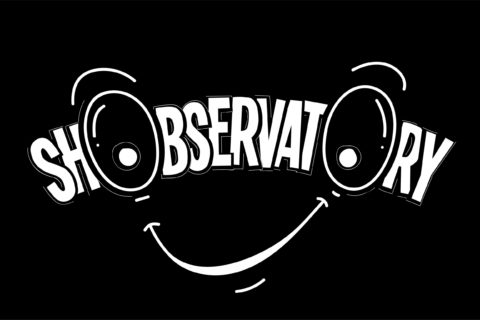I have frequently heard it said that there’s really nothing new in the ideas and approaches we use in market research – it’s just that technology has enabled us to unleash at scale ideas that have been around for decades. Is this really true? I decided to call on the LinkedIn insights community for their thoughts and opinions. This is what I asked them:
Absent technology, what (if any) real innovations have occurred in the [market research and data analytics] fields in the last twenty years?
The response was both robust and heartening, even if some pointed out that the combination of ‘absent technology’ and ‘real’ made it a tough question to answer. Why did I specify ‘absent technology’? Because it is indisputable that technology has been at the core of a lot of innovation in our industry in the last two decades, but much of that has been to enable ideas that already existed to actually gain traction. A great example of this is eye tracking. This is an idea and a methodology that has been around since the 1980s, usually performed in those days in central locations. The advent of the Internet enabled it to scale massively while technological advances also added aspects such as facial coding to the mix. Virtual store/shopping has been around since the 1990s – again held back by the expense of fieldwork and the technology itself until the advent of the digital revolution. What I wanted to know was ‘are there any really new ideas out there that have led to innovation and that have not been technology-dependent, even though they may have been technology-enabled in their evolution?’
Here are some of the candidates put forward as evidence of real, idea-based innovation in our industry of late.
MR Communities and, more specifically, their ability to merge qualitative and quantitative longitudinal insights were mentioned by many. Indeed, this idea has been one of the fastest growing segments of the research industry for a number of years now. While it was pointed out that a crude version of this existed in B2B (usually outside of MR) in the Eighties and Nineties, I believe we can point to it as being a genuine innovation. Was it aided and abetted in its execution by the advent of the Internet? Of course, but the idea was new on its own merits.
There was also much discussion around our ability to better understand and mine human psychology and decision-making. The influence of Behavioral Economics was cited leading to such advances as Implicit Attitude Measurement and the application of techniques designed to uncover System 1 thinking. Interestingly, there is still much discussion about whether our application of Behavioral Economics/Sciences accurately reflects the complexity of human decision-making, especially since Kahnemann himself stressed that System 1/System 2 was merely shorthand for a much more complicated construct. Nevertheless, the search for ways to go beyond a mere System 2 response to our questioning is definitely a rolling process of innovation.
This, of course, leads us neatly into the whole arena of Neuroscience, cited by many as a new frontier for research. That there have been advances in this area is without doubt, but it is interesting that it repeatedly falls to the bottom of the list of things that clients are studying, that it has received little in terms of venture financing, and that the firms who have pursued it have generally struggled. An innovation waiting for its moment?
Another innovation that relies less on direct rather than indirect response is Prediction Markets. Strictly speaking, this is not a brand-new idea, having its roots in the 1880’s. Widely used since in politics and finance, some firms have attempted to apply it in product research to predict uptake of new introductions to the market. Again, interest among clients has been tepid and research companies have struggled to gain traction with it.
Other candidates put forward included refinements (some of them major) to the way in which we answer perennial client questions. One of these was in the area of brand health – specifically, how healthy is my brand in relation to that of the competition? One approach was Brand Association Density, a measure that relies on a single open-ended question designed to elicit responses that, subjected to text-mining, are linkable to other more defined brand associations. This enables researchers to study the inter-connectedness of those associations. Others offered up developments such as Customer Lifetime Value Models, The Conversion Model and even Net Promoter Score (though I would wonder whether this really was an advance!). That agencies are constantly looking to improve measurements and approaches to perennial questions is indisputable, but perhaps these fall into the realm of incremental improvement rather than outright innovation.
The final category that was put forward interestingly revolved around old ideas that had been roundly rejected in the past but were now deemed acceptable. These included Data Fusion and Multimode. The former caused heart failure and outright apoplexy in the U.S. media research industry when mooted in the 1990s and yet now is seen as fundamental to data integration and synthesis. The latter was labeled a total ‘no-no’ back in the Seventies and Eighties due to its potential for introducing unmeasurable bias into a study. In today’s world of poor response rates, it has become a necessity in some areas such as B2B research, while there are now those who would argue that it actually brings a much-needed diversity and richness to our data.
Back to Technology
The point of this enquiry was not to belittle the impact of technological innovation in our industry, but to search for new ideas that were not necessarily technology dependent as a proxy for the degree to which our industry is upping its intellectual property as well as its reach and capability. As Saul Dobney put it, what were the ideas that liberate unpredictable downstream changes much in the same way that the invention of the internal combustion engine led to such innovations as windscreen wipers, headlights, braking systems, car parks and aeroplanes.
That being said, we cannot ignore the tremendous impact that technology has had on our industry in the past twenty years. Video has become a staple of our ability not only to collect a different (and hugely relevant) form of data but also to process it and derive insights from it. Social media as a means of collecting unsolicited opinion (something that was only possible through onsite observation research before) has added a rich and valuable layer to much that we do. And the sheer analytical power that we now have – including the ability to integrate diverse data sets – is beyond the imagination that we had even ten years ago. As some pointed out, this brings with it its own dangers such as over-reliance on massive data sets that are quite capable of bringing forth spurious correlations and ‘insights’. But with progress comes challenges and I believe this industry is up to meeting them.
A final thought
Some in my admittedly self-nominated sample of commentators felt that we are innovating in the way in which we are synthesizing insights, telling the story and visualizing/socializing that story. In other words, we are crawling out of the data swamp to become much more consultative and strategic in our approach to achieving impact in the business. With this I would certainly agree, though whether it is truly new I don’t know. I feel that, in some parts of the world, the strategic and consultative side of research fell dormant for a few decades and, like Rip Van Winkle, is now just waking up.
Whatever the case, I believe that the old mantra that the insights industry (or even the market research industry) is slow to change is being shown up for what it really is – an old wives tale.


